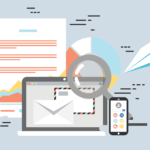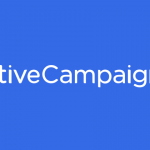Email Campaign Creation Workshop for a Hypothetical Online Store
This workshop guides participants through the process of developing a mock email campaign for “NatureWear,” a hypothetical online store specializing in eco-friendly outdoor apparel.
The focus is on creating engaging content, visually appealing design, and targeted segmentation to reach and resonate with the store’s ideal customer base.
Objective
To equip participants with hands-on experience in planning and executing an effective email marketing campaign, from conceptualization to design and targeting.
Preparation
- Brief on NatureWear: Provide background information on the hypothetical store, including its target audience (eco-conscious outdoor enthusiasts), product range, brand values (sustainability, quality, adventure), and campaign goals (increase product awareness, drive sales for a new product line, collect customer feedback).
- Email Marketing Tools: Introduce email marketing software that will be used for the workshop, such as Mailchimp or Klaviyo, including a brief tutorial on their key features for campaign creation and analytics.
- Design Resources: Offer access to design tools and resources, including Canva for email templates and Unsplash for high-quality, royalty-free images.
Workshop Activities
-
Campaign Conceptualization (30 minutes)
- Participants brainstorm the campaign’s core message and objectives. For NatureWear, the campaign might focus on introducing a new line of recycled-fiber rain jackets.
- Determine the target audience segment for this campaign, such as recent website visitors who viewed outdoor apparel but did not make a purchase.
-
Content Creation (45 minutes)
- Subject Line and Preheader: Craft compelling subject lines and preheader text that entice recipients to open the email. Test several options for A/B testing purposes.
- Body Content: Develop the email’s body content, emphasizing the eco-friendly aspects of the product line, customer benefits, and a clear call-to-action (CTA) encouraging recipients to shop the new collection.
- Personalization: Plan for personalized elements, such as addressing recipients by name or referencing their previous interactions with NatureWear (e.g., “Based on your love for our eco-friendly gear…”).
-
Design and Layout (30 minutes)
- Using the chosen design tool, participants select or create an email template that aligns with NatureWear’s brand aesthetics.
- Incorporate high-quality images of the new product line, ensuring the design is responsive and visually appealing across devices.
-
Segmentation and Targeting (15 minutes)
- Discuss how to segment NatureWear’s email list to target the campaign effectively. Consider factors like past purchase behavior, engagement with previous emails, and demographic information.
- Finalize the targeted segment for the campaign, ensuring it aligns with the campaign’s goals and message.
-
Review and Feedback (30 minutes)
- Participants present their email campaign plans to the group, including the concept, content, design, and targeting strategy.
- Facilitate a constructive feedback session, focusing on the campaign’s strengths and areas for improvement.
This workshop provides a practical foundation for creating and implementing an email marketing campaign, combining strategic planning with creative content and design.
Participants leave with a better understanding of how to develop targeted, engaging email campaigns that resonate with their audience and support their marketing objectives.
Next Steps
- Participants are encouraged to apply the skills and insights gained from the workshop to their real-world projects or businesses.
- Implement the feedback received during the workshop to refine the email campaign further before launching.
Automation Scenario Exercise for Online Retail Email Marketing
This exercise is designed to help participants understand and apply email automation techniques in real-world scenarios that online retailers commonly face.
By creating automated email sequences, participants will learn how to engage different segments of their audience effectively, from welcoming new subscribers to re-engaging loyal customers.
Objective
To develop practical skills in designing and implementing automated email sequences that cater to specific customer behaviors and milestones for an online retail business.
Preparation
- Scenario Descriptions: Provide detailed descriptions for each scenario: a new subscriber, an abandoned cart, and a loyal customer. Include relevant background information that might influence the email sequence design, such as customer interests or previous interactions with the brand.
- Email Marketing Platform Overview: Offer a brief refresher on how to use email marketing software (e.g., Mailchimp, Klaviyo) for creating and automating email sequences.
- Group Formation: Divide participants into small groups, assigning one scenario per group.
Scenarios and Tasks
-
New Subscriber:
- Objective: Welcome the new subscriber, introduce them to the brand, and encourage their first purchase.
- Tasks:
- Design a welcome email that highlights the brand’s values and unique selling propositions.
- Create a follow-up email that showcases best-selling products and includes a first-purchase discount.
- Plan a third email that provides valuable content related to the subscriber’s interests, such as tips for maintaining eco-friendly products.
-
Abandoned Cart:
- Objective: Remind the customer of their abandoned items and motivate them to complete the purchase.
- Tasks:
- Develop an initial reminder email that visually displays the abandoned items and offers assistance if they encountered any issues.
- Create a second email that emphasizes the benefits of the products left in the cart and possibly includes customer testimonials.
- Design a final email in the sequence that offers a limited-time discount or free shipping to encourage purchase completion.
-
Loyal Customer:
- Objective: Reward the loyalty of the customer, encourage continued engagement, and foster brand advocacy.
- Tasks:
- Craft an email acknowledging their loyalty and offering an exclusive discount or early access to new products.
- Develop an email inviting them to join a loyalty program or VIP club, outlining the benefits of joining.
- Plan an email requesting feedback on their shopping experience or product suggestions, emphasizing their valued input to the brand.
Group Work and Presentation
- Development Phase (1 hour): Groups work on their assigned scenarios, planning the content, timing, and triggers for each email in their sequence.
- Presentation (30 minutes per group): Each group presents their automated email sequence to the other participants, explaining the strategy behind their choices and how they aim to achieve the scenario’s objective.
Feedback and Discussion
- After each presentation, facilitate a feedback session focusing on the creativity, relevance, and potential effectiveness of the email sequences.
- Discuss how each sequence can be optimized based on best practices in email marketing and automation.
This exercise offers participants hands-on experience in creating targeted, automated email sequences for various customer interactions.
Through practical application and collaborative feedback, they gain insights into leveraging email automation to enhance customer engagement, drive sales, and build loyalty in an online retail context.
Next Steps
- Encourage participants to apply the concepts learned by implementing similar email automation strategies in their businesses or projects.
- Suggest reviewing the performance of these automated sequences regularly, using analytics to refine and improve them over time.
A/B Testing Role-Play for Email Campaigns
This role-play exercise simulates the A/B testing process for email campaigns, allowing participants to understand how to experiment with different email elements to optimize performance.
Through analyzing hypothetical data, participants will make informed decisions to improve the effectiveness of email marketing efforts.
Objective
To develop participants’ skills in conducting A/B tests for email campaigns, analyzing results, and applying findings to enhance email marketing strategies.
Preparation
- Scenario Briefs: Create briefs for several email campaigns needing optimization, such as a product launch, a newsletter subscription drive, or a seasonal sale announcement.
- A/B Testing Elements: List the elements that will be tested, including subject lines, call-to-action (CTA) buttons, email content, and sending times.
- Hypothetical Data Sets: Prepare hypothetical data sets showing the results of A/B tests for each scenario, including open rates, click-through rates (CTRs), and conversion rates.
- Role Assignment: Divide participants into small groups, assigning each group a scenario and roles (e.g., Campaign Manager, Data Analyst, Content Creator).
Role-Play Activities
-
Campaign Planning (20 minutes)
- Each group discusses their assigned scenario and decides which element of the email campaign to test. For example, they might choose to test two different subject lines to see which results in a higher open rate.
-
Creating Variants (30 minutes)
- Groups create two variants (A and B) for the chosen element, ensuring they differ only in the aspect being tested to maintain the validity of the test.
-
Reviewing Hypothetical Data (20 minutes)
- Groups are provided with hypothetical data sets showing the results of their A/B test. They analyze these results to determine which variant performed better based on predetermined metrics.
-
Decision Making (20 minutes)
- Based on the analysis, each group decides which variant to implement in their email campaign. They also discuss what other elements could be tested next and hypothesize why the winning variant was more successful.
-
Presentation and Feedback (30 minutes)
- Groups present their findings and decisions, explaining their rationale and discussing how they would apply these insights to optimize future email campaigns.
- Other participants and facilitators provide feedback, suggesting alternative interpretations of the data or additional tests that could be conducted.
Discussion Points
- Discuss the importance of only changing one element at a time when conducting A/B tests to accurately attribute differences in performance.
- Highlight the significance of statistical significance in A/B testing results to ensure that decisions are made on reliable data.
- Explore how ongoing A/B testing can be integrated into an iterative process of continuous improvement for email marketing strategies.
This A/B testing role-play exercise equips participants with practical experience in optimizing email campaigns through data-driven decision-making.
By understanding how to effectively design, execute, and analyze A/B tests, participants can enhance the impact of their email marketing efforts, leading to improved engagement, higher conversion rates, and greater ROI.
Next Steps
- Encourage participants to apply A/B testing principles to their email campaigns, starting with low-hanging fruits like subject lines and CTA buttons.
- Suggest setting up a schedule for regular review and optimization of email campaigns based on A/B testing insights.














